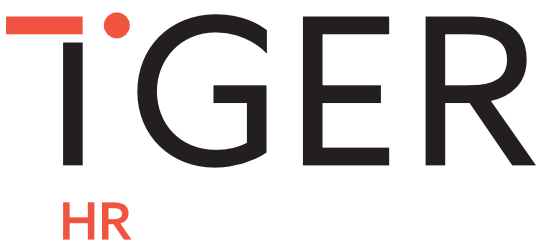As organisations around the world commemorate International Women’s Day 2024, the conversation around gender inclusivity in leadership has never been more pertinent. This article explores the benefits of gender inclusive leadership, the barriers that exist, and strategies for nurturing and retaining female leaders. We also feature insights from Tiger’s very own female leadership team: Rebecca Siciliano, Angela Lopes, Zahra Clark, and Jane Leese.
Evolving Leadership
Over the past few years, the workplace has changed monumentally. The pandemic accelerated the flexible work movement, while George Floyd’s death unleashed a tidal wave of corporate support to diversity, equity and inclusion (DEI). The makeup of leadership teams, despite being slower to change, has also undergone a gradual shift in the past decade, with many evolving from “profit-driven organizations focused on “what” and productivity”, to “purpose-driven cultures focused on ‘why’ and their people”. The likes of B Corp are supporting the drive to inclusivity, having certified over 6,000 companies in more than 80 countries.
When it comes to female representation in leadership teams, where do we now stand? In the last ten years, women in chief executive positions in the FTSE 100 has risen from 3% to 9.3%; women in non-executive roles in FTSE 100 companies grew from 24.8% to 47.4%; and female representation in executive roles almost tripled, rising from 10.5% to 29.8%. Progress has been made, but there is still much to be done.
Benefits of Gender-Inclusive Leadership
Time and again, it has been proven that companies with diverse leadership teams outperform their counterparts, driving innovation and bolstering financial performance. Research from the Council on Foreign Relations emphasises the economic potential of women’s participation in the workforce, amounting to billions of dollars for the global economy. Additionally, organisations with at least 30% women in leadership roles are 12 times more likely to be in the top 20% for financial performance.
The benefits aren’t merely financial, though. Our article, Inclusive Workplaces: a Guide for HR teams, points to diverse organisations being ‘87% better at making decisions’, while inclusive companies are ‘1.7 times more innovative’ than those that aren’t inclusive. In other words, diversity in leadership pays off in a multitude of ways.
Gender-inclusive leadership can also help to inspire the next generation of female leaders. Rebecca Siciliano, Tiger’s Managing Director, explains: “Women have been given more role models in leadership, which means that more women will aspire to be in a role like that because there’s someone they can relate to. No longer do they need to have the same traits as men.” In sum, organisations with inclusive cultures are better positioned to attract and retain top talent, and raise future female leaders.
Barriers to Gender Inclusivity
One barrier to gender-inclusive leadership refers to the ‘broken rung’ phenomenon, where “women remain acutely underrepresented in the middle management”. Additionally, women tend to be appointed to people-led positions, “where they hold less influence, have lower salaries and are less likely to be on track to C-Suite roles”.
Fortunately, in 2024, employers are striving to cultivate environments of inclusivity where diverse voices are heard. Male leaders are increasingly recognising the importance of allyship and advocacy in driving gender equity initiatives. A Harvard Business Review article pinpoints that “male leaders — and men more broadly — are increasingly expected to pursue gender inclusion and equity through deliberate allyship with women.” This could include “collaborative personal relationships, public acts of sponsorship, and advocacy intended to drive systemic improvements in workplace culture.” For some male leaders, these acts may seem of less strategic importance, but HR should continue to encourage this, where possible.
Finally, the ‘motherhood penalty’ still plays a significant role in blocking women’s career progression, with mothers experiencing a 60% drop in earnings compared to fathers in the decade following the birth of a first child. Angela Lopes, Tiger Recruitment Director, reflects on her return from maternity leave: “When I left for maternity leave, around 12 years ago, I felt like there weren’t as many opportunities for me when I returned compared to those who did not have children”. Experiences like these highlight the need for organisations to address the challenges faced by parents returning to work.
Incorporating Inclusive Practices
Understanding and acknowledging diverse gender identities – male, female, transgender, non-binary, and agender – is paramount for organisations to create inclusive environments. It extends beyond policies to encompass everyday practices, such as language usage and communication norms, that acknowledge and respect the richness of these identities. In doing so, companies can create environments where every individual feels seen, valued, and empowered to thrive.
Implementing inclusive language and greetings sets the tone for creating a welcoming atmosphere where all individuals feel valued and respected. These can be small yet impactful changes, such as replacing ‘Hey guys’, with inclusive alternatives like ‘Hello everyone’. Additionally, fostering a workplace culture that celebrates diversity and promotes allyship can instil a sense of belonging among all employees, regardless of gender identity.
It’s also vital for leaders to display transparency in their communication, particularly around initiatives aimed at closing gender disparities, such as pay equity, flexible working policies and parental leave. This will build trust and accountability among current and prospective employees.
Nurturing Female Leaders
HR professionals and management teams play a crucial role in cultivating environments where women can thrive. Investing in targeted training programmes, coaching opportunities, and leadership development initiatives tailored to the unique needs of female employees can foster professional growth and career advancement. Moreover, establishing mentorship networks and affinity groups that provide support and networking opportunities can enhance retention and promote a sense of community.
Empowering female leaders is essential for diverse and resilient organisations. Here are some actionable ways that employers can use to create pathways for women’s advancement and retention.
Promote representation
Importantly, organisations should actively promote female representation and role models in leadership positions through targeted recruitment and succession planning efforts, and by encouraging women to pursue leadership opportunities. This is crucial to encouraging a pipeline of female talent that can be developed into leaders. Further, by identifying and addressing barriers that impede women’s career progression, such as biased hiring practices, employers can ensure they are both developing and attracting top female talent to their organisation. Jane Leese, Head of Tiger Zurich GmbH, advocates starting with the shortlist, highlighting how employers can work towards increasing female representation by ensuring that all shortlisted applicants for open roles are gender-diverse.
Read our guide on best practice DEI initiatives in recruitment.
Foster inclusion
Open dialogue and feedback are key to fostering workplace inclusivity, along with the creation of safe spaces where employees feel empowered to voice their experiences. Further, employers can establish metrics to track progress towards gender-inclusivity goals, with HR regularly assessing and evaluating the effectiveness of DEI initiatives, adjusting as needed to drive meaningful change.
McKinsey’s Women in the Workplace Report 2023 highlights the gains made for women in senior roles, and the significance of flexible working in paving the way for their progression. Following the pandemic, a fifth of women say flexibility helped them stay in their job or avoid reducing their hours. Working remotely or in a hybrid arrangement also contributed to less burnout and fatigue, and most women reported having more focused time to be more productive. Flexible working is undoubtedly key to fostering diversity at all levels of business.
Develop female leaders
Sadly, women are 12% more likely than men to experience burnout at work – but mentoring programmes can help to alleviate this, in addition to facilitating knowledge transfer and improving career advancement.
By implementing tailored training and mentorship programmes that equip female leaders with the skills and resources they need to thrive, they provide opportunities for networking and professional growth. This will facilitate connections with mentors and peers across the organisation, which can be done through workshops, seminars, and executive education programmes. This is particularly useful in organisations with a clear female minority in the leadership team, where female leaders can greatly benefit from the opportunity to network with peers.
By providing opportunities for women to develop leadership skills and expand their professional networks, employers can help nurture their next cohort of female leaders. However, sometimes, the onus is also on the individual to seize opportunities. Zahra Clark, Head of Tiger MENA, emphasises: “Go for it, be confident and take every opportunity that you’re given.”




